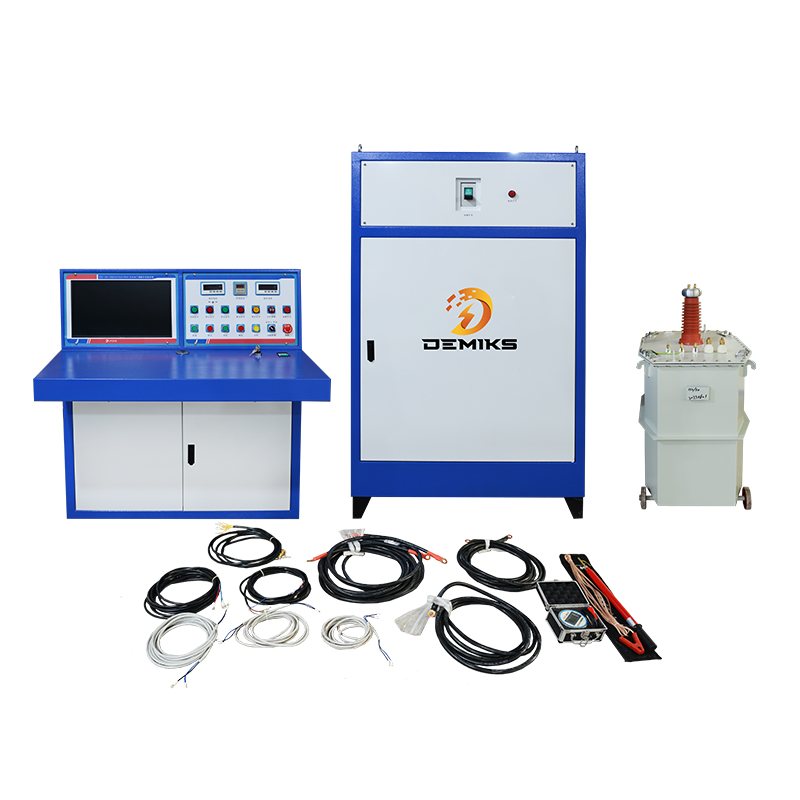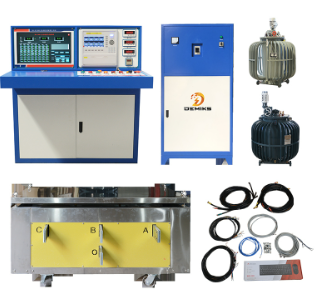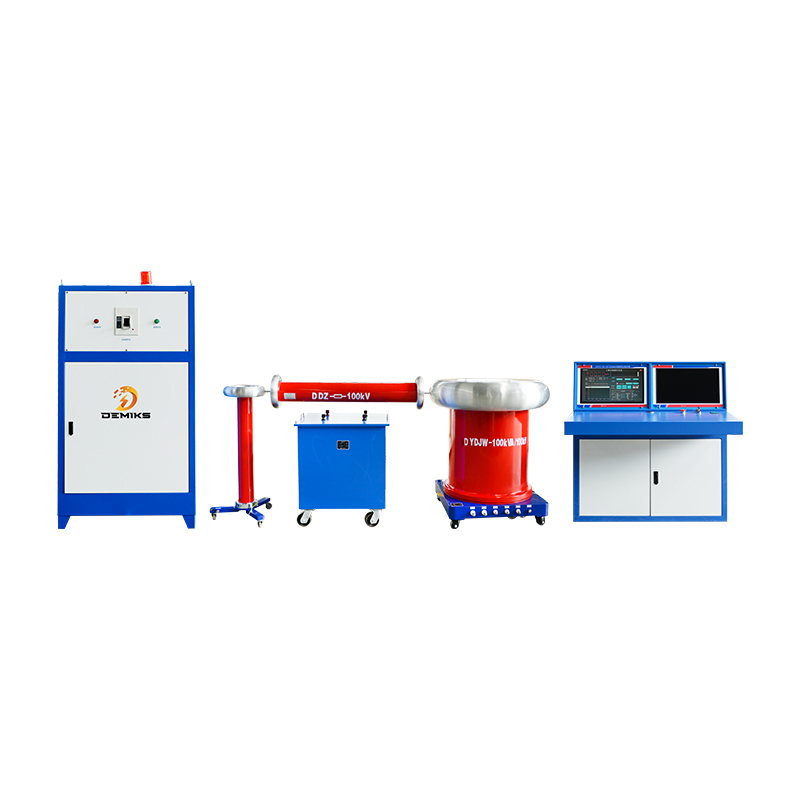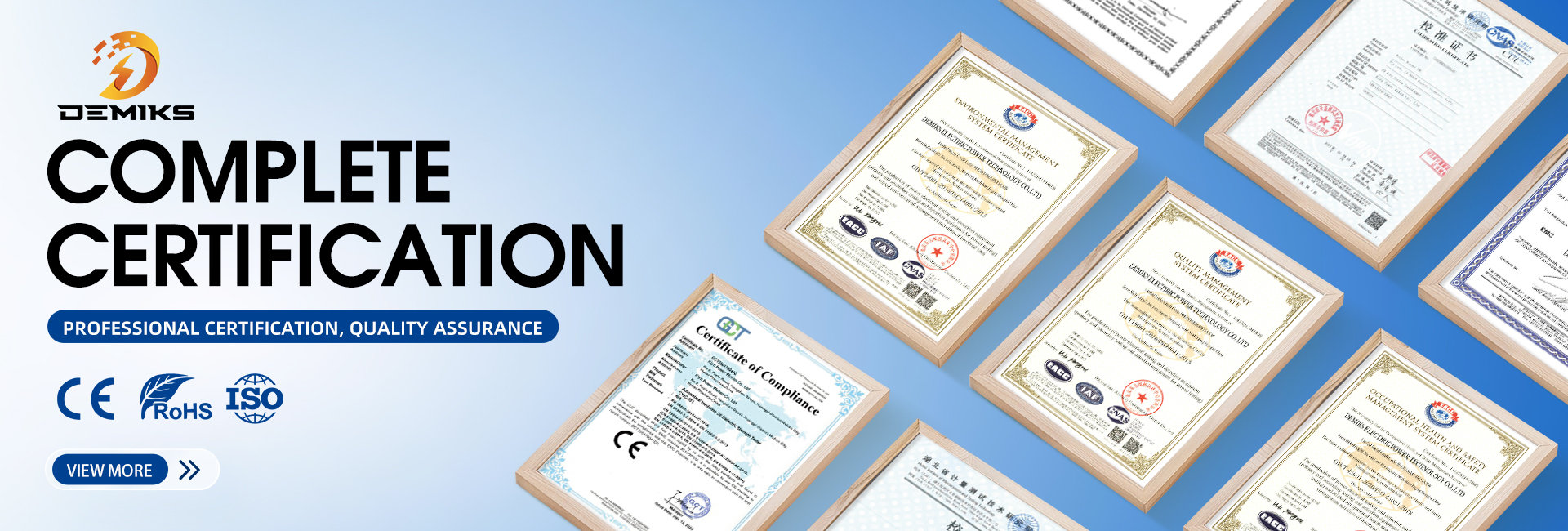Capacitor voltage transformers (CVT) in substations: operation, application and testing
The Capacitive Voltage Transformer (CVT) is a key transformer used in high voltage (HV) substation equipment for voltage measurement, protection and power line carrier communications (PLCC). It is an alternative to the traditional electromagnetic voltage transformer (VT) and is the preferred choice for EHV (extra high voltage) systems, typically 66kV and above.
1. Working Principle of CVT
A CVT consists of:
Capacitive Voltage Divider (C1 & C2) – Steps down high voltage to an intermediate level.
Inductive Reactor (Tuning Inductor, L) – Compensates for phase shift.
Intermediate Transformer – Further reduces voltage to standard levels (e.g., 110V or 66V).
How It Works:
The primary capacitor (C1) takes a portion of the line voltage.
The secondary capacitor (C2) further reduces this voltage.
The tuning inductor (L) resonates with C2 to eliminate phase errors.
The intermediate transformer steps it down to a measurable level.
2. Applications of CVT in Substations
✔ Voltage Measurement – Feeds metering & protection relays.
✔ Synchronization & Protection – Used in distance relays, overvoltage/undervoltage protection.
✔ Power Line Carrier Communication (PLCC) – Acts as a coupling capacitor for communication signals.
✔ Revenue Metering – Provides accurate voltage signals for billing.
3. Advantages of CVT Over Conventional VT
✅ More economical for EHV systems (above 132kV).
✅ No risk of ferroresonance (unlike electromagnetic VTs).
✅ Doubles as a coupling capacitor for PLCC.
✅ Better frequency response for harmonics & transients.
4. Testing & Maintenance of CVT
To ensure accuracy and reliability, CVTs undergo:
A. Routine Tests
Insulation Resistance Test (Megger Test)
Checks insulation between primary & secondary.
Acceptance: > 1000 MΩ (IEEE Std. C57.13).
Turns Ratio Test (Voltage Ratio Test)
Ensures correct step-down ratio.
Polarity Test
Verifies correct phase relationship.
Burden Test
Checks performance under rated load.
B. Type Tests (Manufacturer’s Tests)
Power Frequency Withstand Test – Checks insulation strength.
Impulse Voltage Test – Simulates lightning surges.
Temperature Rise Test – Ensures thermal stability.
C. On-Site Commissioning Tests
Primary Injection Test – Validates ratio & phase angle.
Dielectric Test – Ensures no internal breakdown.
5. Common Issues & Troubleshooting
| Issue | Possible Cause | Solution |
|---|---|---|
| Incorrect Voltage Output | Faulty capacitor unit, tuning inductor drift | Check ratio, replace defective parts |
| Overheating | Excessive burden, poor connections | Reduce load, inspect terminals |
| High Tan Delta (Insulation Loss) | Moisture ingress, aging | Dry or replace capacitor stack |
| PLCC Signal Loss | Damaged coupling capacitor | Test capacitance & replace if needed |
6. Standards for CVTs
IEEE C57.13 – Standard for Instrument Transformers.
IEC 61869-5 – Capacitive Voltage Transformers.
ANSI/NETA MTS-2019 – Maintenance Testing Specifications.
Conclusion
A Capacitor Voltage Transformer (CVT) is a critical component in EHV substations, providing accurate voltage measurement, protection, and communication. Unlike traditional VTs, CVTs are cost-effective for high voltages and offer better performance in dynamic conditions.
Need details on CVT vs. PT selection, or specific test procedures? Let me know!
The above content is published by demiks, please specify, demiks is a substation equipment manufacturer, specializing in the production of high-voltage tester, transformer test equipment, circuit breaker test equipment, relay tester, SF6 gas analyser, cable fault tester and other products, if you have power test testing needs, please feel free to contact demiks power science and technology limited company or send an email! Give us: contact@demikspower.com
 Relay Protection Testing and Commissioning Gu
Relay Protection Testing and Commissioning Gu
 how to test microwave transformer
how to test microwave transformer
 how to reset circuit breaker with test button
how to reset circuit breaker with test button
 high voltage cable testing standards
high voltage cable testing standards




